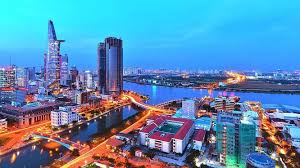WB: VN’s economic fundamentals appear robust
VGP – The World Bank forecasts Viet Nam’s GDP growth of around 6.5% over the next few years and the nation’s economic fundamentals appear robust.
 |
Viet Nam’s economy has performed well in 2019, with GDP expanding by an estimated 6.8%, public debt reduced by almost 8 percentage point of GDP since 2016, and a trade balance surplus for the fourth year in a row.
Accordingly, the GDP growth has continued to be driven by a strong external sector with exports expanding by about 8% in 2019 – nearly 4 times faster than the world average. The country has also remained an attractive destination for foreign investors, with foreign direct investment (FDI) inflows averaging US$3 billion per month. In addition, private consumption has emerged as an important contributor to GDP growth as the result of an expanding middle-income class and rising wages. Private firms also increased investment by 17% during the same period.
However, the country is not completely immune to external shocks as demonstrated by the gradual decline in export growth from 21% to 8% between 2017 and 2019. This decline in export growth has been even more pronounced in non-U.S. markets, up by only 3.6% during the first 11 months of 2019. Greenfield FDI has also slowed by about 30% over the past two years, even if it has been compensated by an increase in mergers and acquisitions.
Addressing the financing constraint of firms should receive the greatest attention from policy makers if Viet Nam wants to continue on its trajectory of rapid and inclusive growth and reach high-income status in the coming decades, said Ousmane Dione, World Bank Country Director for Viet Nam.
The report suggests five areas policy makers should focus on to advance the development of the capital markets: modernizing the legal and regulatory foundation of the capital markets; improving governance and information disclosure; broadening the investor base; developing innovative products; and strengthening the government’s role in the development of long-term finance.
By Thuy Dung

